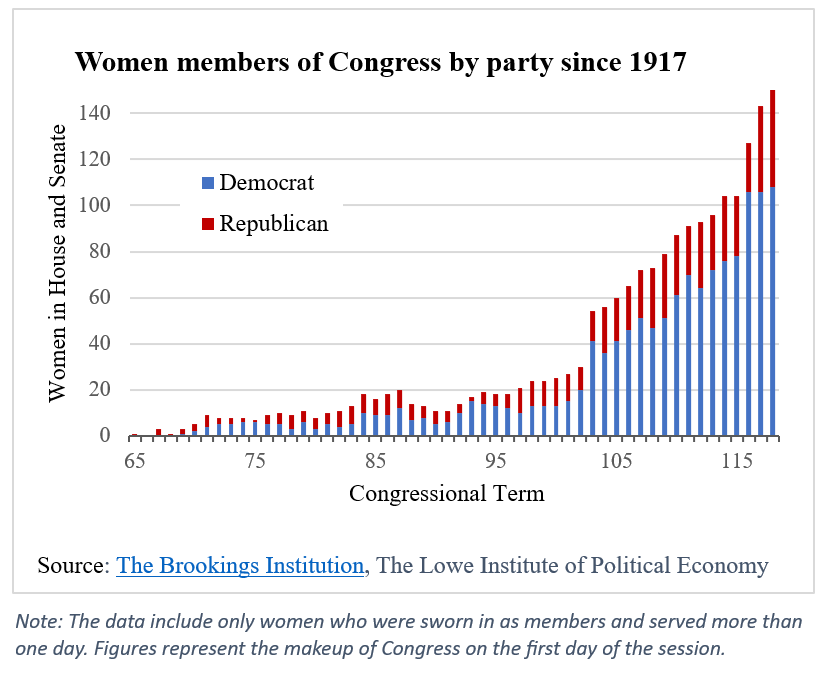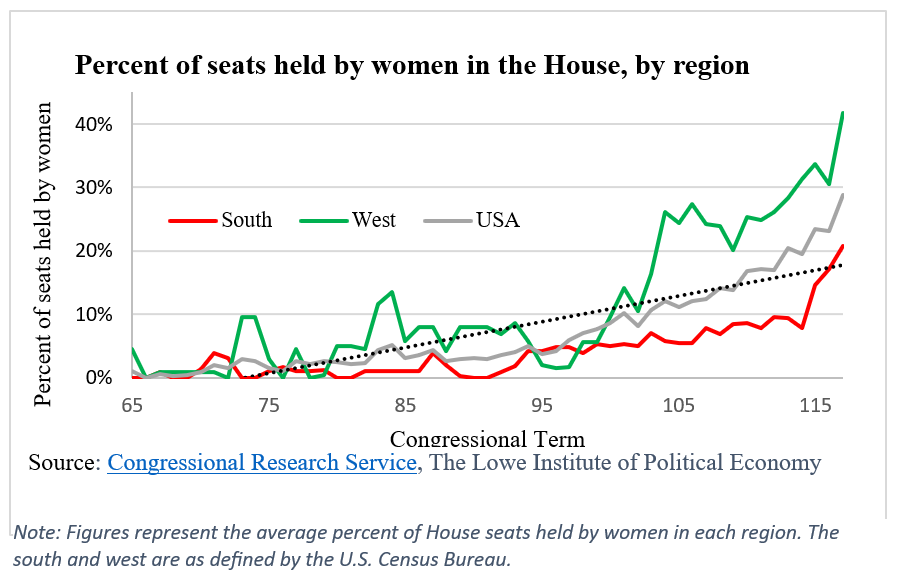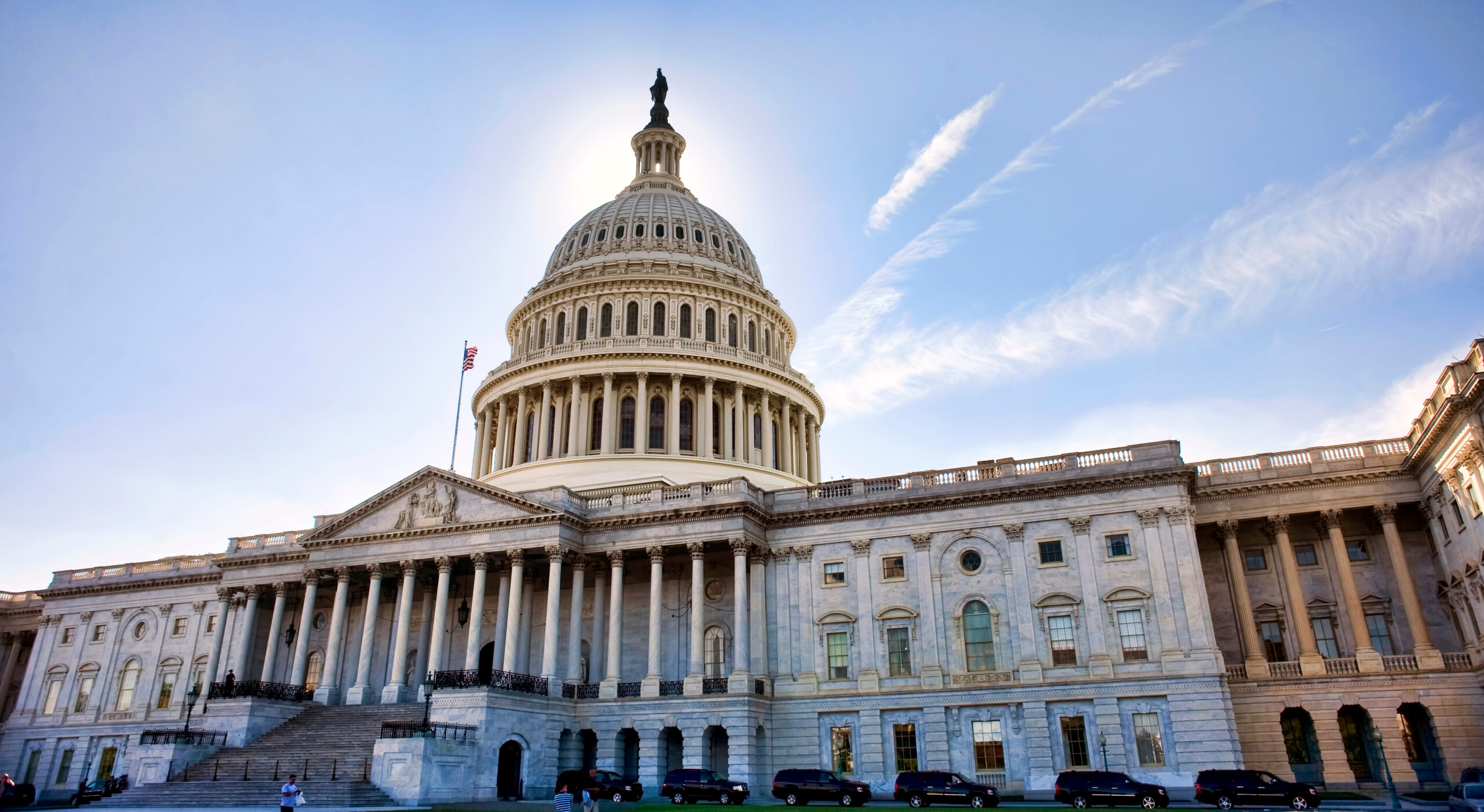Article by Rachel Supnick ’26
Women make up the highest proportion of Congress than ever before – 29% of the House and 25% of the Senate, a considerable increase from even ten years ago when women held only 18% of Congressional seats. This milestone comes during the term of the first female Vice President, Kamala Harris.
An upward trend in female representation is promising but becomes inconsistent at the regional level. Some parts of the country are still electing women at disproportionately low rates – particularly in the South.
 For almost one hundred years southern states have elected women to the House at lower rates than the U.S. overall. The gap began in 1933 and has increased, on average, by 2% every ten years. Currently the proportion of Congresswomen in the south lags 8% behind the national proportion of female representatives.
For almost one hundred years southern states have elected women to the House at lower rates than the U.S. overall. The gap began in 1933 and has increased, on average, by 2% every ten years. Currently the proportion of Congresswomen in the south lags 8% behind the national proportion of female representatives.
Meanwhile, western states tend to elect women at higher rates than the rest of the country. The female House election rate in the west currently tops the U.S.-overall rate by 13%, growing steadily since the late 1980s. 
Geographic trends observed in the West and South somewhat correspond with partisan lines. California, Oregon, and Washington have been blue in presidential elections since 1992. Most southern states have been red since 1980 when Ronald Reagan was elected. There are outliers, however, including Arizona, Colorado, and New Mexico in the West and Georgia and Virginia in the South, which have historically swung between Democrat and Republican in presidential races.
In the current Congress there are 108 Democrats and 42 Republicans in female-held seats, more than a 2:1 ratio. The comparative number of Congresswomen from each party fluctuated until the 91st Congress in 1969 when Democrats consistently took the lead in female representation. The only exception has come in the 97th Congress with the election of one more Republican woman than Democrat.
Public opinion on women holding high office is also skewed by party lines. Based on the 2020 American National Election Survey of over 7,000 Americans, 37% of Democrats think it is ‘extremely important’ that more women be elected to political office, compared to only 5% of Republicans. On the flip side, some 30% of Republicans think electing more women to office is ‘not at all important,’ compared to only 4% of Democrats.
Female representation in Congress has consistently increased since the mid-1980s. The 103rd Congressional election in 1992 brought twenty-four new Congresswomen into office, a significant jump. Political experts have offered various explanations for the expansion, including an unusual number of open seats that term and strong public reactions towards the Clarence Thomas-Anita Hill hearings.
The 2018 midterm election was also a historic one for women. It marked the election of the first Muslim women to Congress, Ilhan Omar and Rashida Tlaib; the first Native American women to Congress, Deb Haaland and Sharice Davids; and the youngest women ever elected to Congress, Alexandria Ocasio-Cortez.
Twenty-three women were sworn in, including ten from the South. The count includes state-firsts, as well: Cindy Hyde-Smith from Mississippi, Kyrsten Sinema and Martha McSally from Arizona, and Marsha Blackburn from Tennessee are their states’ first female Senators. The Senate has historically been slow to gain women but is now at an almost equal standing to the House at a 1:3 ratio of women to men.
This record-breaking Congress came in the middle of Donald Trump’s presidency. Historically, midterm elections tend to flip at least one chambers in the legislature to the opposing party of the president. The 116th Congress did elect a Democrat-majority to the House, bringing a substantial jump in female and racial representation with it. Connecticut and Massachusetts elected their first Black Congresswomen, and Texas its first Latina representative. Of the 127 women elected, 106 were Democrat.
While female representation has grown substantially since the election of the first woman to Congress in 1917, females still only make up about a quarter of the legislature – significantly less than their share of the American population. Still, the current Congress brings the highest number of women to date and the greatest racial diversity the legislature has seen. The 2024 Congressional election will tell whether the low female election rate in the South and Republican Party continue or reach a turning point.
Article by Rachel Supnick ’26
Economic Journalist, Lowe Institute of Political Economy
Claremont McKenna College

